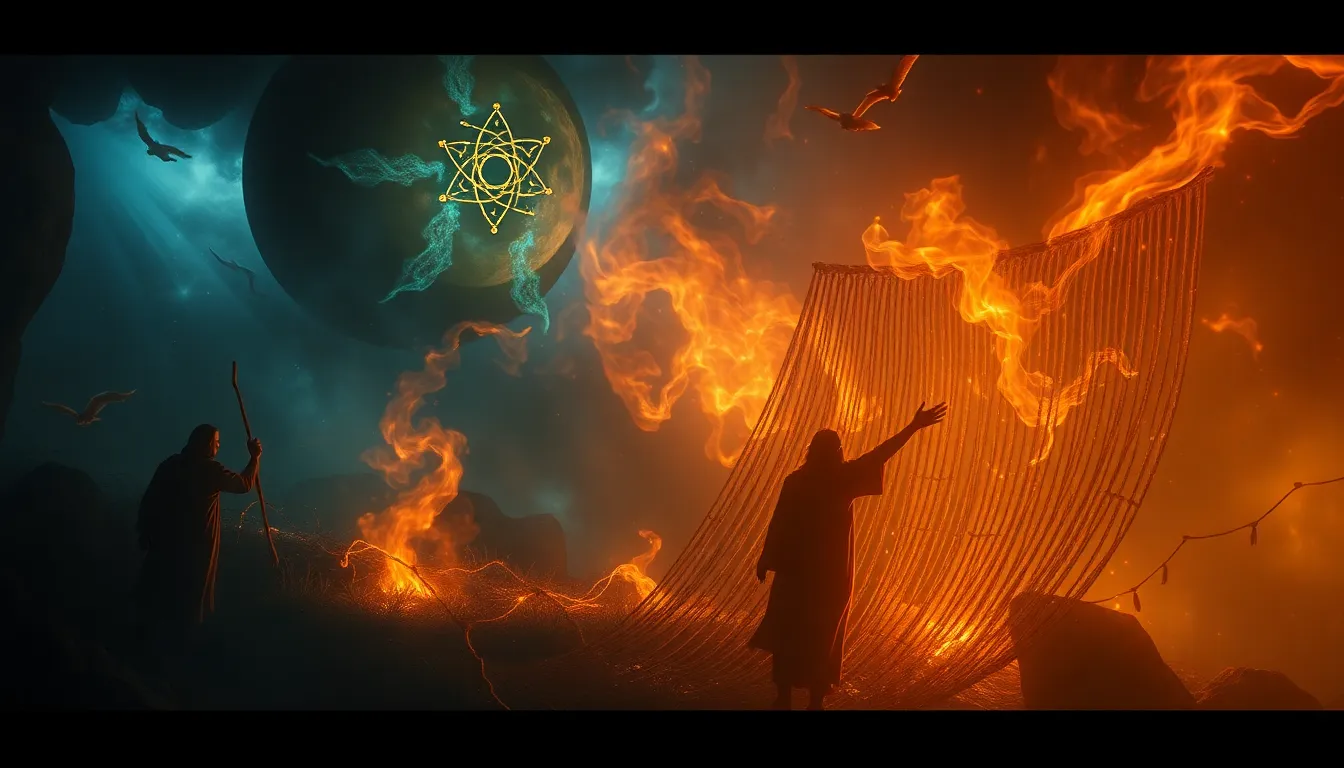The Mythical Weave: Tying Together Sacred Narratives
1. Introduction
Sacred narratives are stories that hold profound significance within various cultures, often serving as foundational texts that convey moral lessons, cultural values, and spiritual beliefs. These narratives, passed down through generations, create a tapestry of shared understanding and identity among people. The concept of the “mythical weave” serves as a metaphor for the interconnectedness of these narratives, illustrating how they bind individuals and communities through shared themes, experiences, and aspirations.
2. Understanding Sacred Narratives
Sacred narratives encompass a broad range of stories, including mythologies, religious texts, folktales, and epics that are considered holy or significant within a culture. They often articulate humanity’s relationship with the divine, the natural world, and each other. Historical contexts show that these stories have evolved over time, adapting to the changing values and beliefs of societies. They can be found in oral traditions as well as written forms, reflecting the cultural heritage of various peoples.
3. The Role of Myth in Human Experience
Myths play an essential role in human experience, serving several psychological and social functions:
- Psychological Comfort: Myths provide explanations for existential questions, offering comfort in the face of uncertainty.
- Social Cohesion: Shared narratives strengthen community bonds and foster a sense of belonging among individuals.
- Cultural Identity: Myths contribute to the formation of cultural identity, allowing people to connect with their heritage and history.
Through these functions, myths shape cultural identity and collective memory, influencing how communities perceive themselves and their place in the world.
4. Common Themes Across Sacred Narratives
Across the globe, sacred narratives often feature universal themes that resonate with the human experience:
- Creation: Many cultures have stories that explain the origins of the universe and humanity.
- Morality: Myths frequently convey moral lessons, guiding ethical behavior and societal norms.
- Heroism: Narratives of heroes embarking on quests emphasize the values of courage, sacrifice, and resilience.
These themes highlight the shared concerns of humanity, transcending geographical and cultural boundaries.
5. Interconnectedness of Myths Across Cultures
Examining the interconnectedness of myths reveals fascinating similarities among diverse cultures. For example:
- Flood Myths: Many cultures, including the Mesopotamian, Hindu, and Native American traditions, feature stories of catastrophic floods that cleanse the world.
- Hero Journeys: The archetype of the hero’s journey, popularized by Joseph Campbell, can be seen in narratives from Greek mythology to modern films.
This interconnectedness can often be attributed to cultural diffusion, where stories and themes are shared and adapted as cultures interact over time.
6. The Influence of Sacred Narratives on Religion
Sacred narratives are integral to the formation and practice of religions worldwide. They inform religious beliefs, rituals, and ethical guidelines. For instance:
- Creation Stories: These narratives help adherents understand their faith’s origins and purpose.
- Rituals and Worship: Storytelling is often woven into religious practices, enhancing the communal experience and reinforcing shared beliefs.
Through storytelling, sacred narratives breathe life into religious traditions, making abstract concepts tangible and relatable.
7. The Modern Reinterpretation of Sacred Narratives
Contemporary society often reinterprets traditional myths, adapting them to fit modern contexts. This reinterpretation occurs through:
- Literature and Film: Classic myths are reimagined in novels and movies, allowing new generations to engage with these stories.
- Social Media: Platforms provide avenues for sharing and discussing sacred narratives, making them accessible to global audiences.
As a result, the impact of media and technology continues to shape the transmission and understanding of these narratives.
8. The Importance of Preservation and Revitalization
With the threat of globalization and cultural homogenization, efforts to preserve endangered sacred narratives are crucial. Various initiatives include:
- Community Projects: Local groups work to document and share their oral traditions.
- Academic Research: Scholars study and publish findings on lesser-known narratives, bringing awareness to their significance.
Revitalizing these stories not only honors cultural heritage but also enriches the global narrative landscape.
9. The Future of Sacred Narratives in a Globalized World
As globalization continues to shape cultural interactions, the future of sacred narratives may hold new possibilities. Potential changes include:
- Hybrid Narratives: The blending of traditional and contemporary stories may give rise to new myths that reflect modern experiences.
- Global Awareness: Increased cross-cultural exchanges could lead to a greater appreciation for diverse sacred narratives.
New myths may emerge in response to contemporary challenges, addressing issues like climate change, technology, and social justice.
10. Conclusion
The enduring power of sacred narratives highlights their importance in human culture. They serve as a bridge connecting individuals and communities through shared themes and experiences. By exploring the mythical weave that ties us together, we can appreciate the rich tapestry of stories that shape our world and continue to influence our lives.




